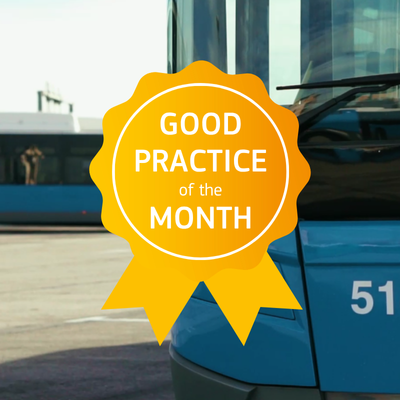This spotlight series is dedicated to showcasing the best practices shared by ERSC members. Each month, we highlight a different member’s innovative road safety initiative. By presenting these success stories, we aim to create a collaborative environment where others can recognise, celebrate, and adopt lessons learned and best practices.
Our July spotlight features the project “El autobús, aún más seguro: protegiendo al peatón y ciclista” (The bus, even safer: protecting pedestrians and cyclists), led by Sistemas ADAS in collaboration with Madrid’s municipal transport company EMT . The project improves safety around urban buses by retrofitting existing vehicles with advanced active safety technology that detects pedestrians and cyclists in blind spots and warns drivers to help prevent collisions.
Why this initiative has been recognised as Good Practice of the Month
This initiative has been selected for its clear impact on improving road safety by addressing risks for vulnerable road users near urban buses. It offers a practical and affordable way to quickly upgrade existing bus fleets, complementing the broader Vision Zero goal of reducing close to zero serious road injuries and deaths.
Key inspiration behind the initiative
The project was inspired by the need to improve safety for pedestrians and cyclists around urban buses, especially since many buses currently in operation lack the latest active safety systems. While new European regulations (GSR-II) require these technologies on all new buses starting July 2024, the average age of bus fleets means many vehicles will remain without these protections for years. This initiative aims to close that safety gap by adapting and installing advanced safety technology on existing buses to better protect vulnerable road users.
Project activities
The project began in June 2023 with a pilot to implement the Mobileye Fisheye active safety system on three buses lacking such technology within the EMT Madrid fleet. The Mobileye Fisheye system is a vision-based driver assistance technology that helps detect and warn of potential collisions with pedestrians, cyclists, and other vehicles. Over approximately 12 weeks, requirements were defined, the technology was installed and adapted, tested, validated, and EMT Madrid drivers and trainers received training on the system.
Following eight weeks of successful trials, the solution was extended to 50 additional buses in service, with plans to expand it to the entire EMT Madrid fleet. Sistemas ADAS led the technology selection and adaptation, focusing on pedestrian and cyclist detection. The system provides drivers with visual alerts of vulnerable road users in blind spots to support safer manoeuvres.
Outcomes of the initiative
Although specific safety data was not available, the project raised awareness of active safety technology benefits in urban bus fleets. Its wide media coverage and social media presence have helped highlight the potential of these systems to improve safety for pedestrians and cyclists in busy city environments.
For more information
Read more about the project here – explore the project's activities and outcomes in further detail.
If you want to develop a similar strategy in your local authority or Member State, contact the project lead, Alfonso Sánchez Vicente at gerencia@emtmadrid.es.
Explore all our members’ Good Practices here. To submit your own Good Practice, please log in to your account and complete the form on this page.
Not a member yet? Sign up today here!
Country
Geographical coverage
